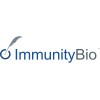N-803 and PD-L1 t-haNK Combined With Bevacizumab for Recurrent or Progressive Glioblastoma
Glioblastoma

About this trial
This is an interventional treatment trial for Glioblastoma focused on measuring Progressive Glioblastoma, Recurrent Glioblastoma, N-803, ALT-803, PD-L1 t-haNK, Immunotherapy, Bevacizumab, Glioblastoma
Eligibility Criteria
Inclusion Criteria: Age ≥ 18 years. Able to understand and provide a signed informed consent that fulfills the relevant IRB or IEC guidelines. Histologically-confirmed glioblastoma in accordance with the 2021 WHO Classification of Tumors of the CNS (WHO CNS5) that has progressed after initial therapy or therapies. The digital image to be provided for confirmation of histology by the Sponsor. Gliosarcoma, small cell GBM or other GBM variants, and molecular GBM are allowed. Progressive or recurrent disease will be confirmed (i.e. contrast enhanced magnetic resonance imaging (MRI) performed within 3 weeks prior to study treatment per RANO criteria or diagnostic biopsy). Previous first line treatment with at least radiotherapy and temozolomide. Subjects must have been off prior treatment at least 28 days prior to initiation of study therapy. Subjects must be at least 90 days from completion of radiation to reduce the risk of pseudoprogression being misdiagnosed as progression, unless the recurrence is a new enhancement on MRI outside the radiation treatment field or progression is confirmed by biopsy. Subjects must have recovered from prior treatment-related toxicities to Grade 2 or less. Life expectancy > 12 weeks. Karnofsky Performance Status ≥ 70. Ability to attend required study visits and return for adequate follow-up, as required by this protocol. Agreement to practice effective contraception for female subjects of child-bearing potential and non-sterile males. Female subjects of child-bearing potential must agree to use effective contraception for up to 6 months after completion of therapy, and non-sterile male subjects must agree to use a condom for up to 6 months after treatment. Effective contraception includes surgical sterilization (eg, vasectomy, tubal ligation), two forms of barrier methods (eg, condom, diaphragm) used with spermicide, intrauterine devices (IUDs), and abstinence. Craniotomy must be adequately healed (at least 28 days between study treatment initiation and surgery). Exclusion Criteria: Serious uncontrolled concomitant disease that would contraindicate the use of the investigational drugs used in this study or that would put the subject at high risk for treatment related complications. Prior anticancer treatment of glioblastoma with bevacizumab or other anti-angiogenic treatment. Current chronic daily treatment (continuous for > 3 months) with systemic corticosteroids (dose equivalent to or greater than 8 mg/day dexamethasone), excluding inhaled steroids. Short-term steroid use to prevent intravenous (IV) contrast allergic reaction or anaphylaxis in subjects who have known contrast allergies is allowed. History of surgery in the past 28 days or with surgical wound not healed. History of serious hemorrhage as defined by NCI CTCAE 5.0 grading. Evidence of > Grade 1 CNS hemorrhage on the baseline MRI scan. History of recent hemoptysis. Subjects receiving therapeutic anticoagulation. Subjects with a history or evidence of inherited bleeding diathesis or significant coagulopathy at risk of bleeding. Systemic autoimmune disease (eg, lupus erythematosus, rheumatoid arthritis, Addison's disease) requiring any treatment within the last 5 years. History of organ transplant requiring immunosuppression. History of active inflammatory bowel disease (eg, Crohn's disease, ulcerative colitis). Dyspnea at rest due to complications of advanced malignancy or other disease requiring continuous oxygen therapy. Body weight ≤ 40 kg at screening. Inadequate organ function, evidenced by the following laboratory results: Absolute neutrophil count (ANC) < 1,000 cells/mm3. Hemoglobin < 9 g/dL. Platelet count < 100,000 cells/mm3. Total bilirubin > 2 × upper limit of normal (ULN; unless the subject has documented Gilbert's syndrome). Aspartate aminotransferase (AST [SGOT]) or alanine aminotransferase (ALT [SGPT]) > 2.5 × ULN (> 5 × ULN in subjects with liver metastases). Alkaline phosphatase (ALP) levels > 2.5 × ULN (> 5 × ULN in subjects with liver metastases, or > 10 × ULN in subjects with bone metastases). Serum creatinine > 2.0 mg/dL or 177 µmol/L. Albumin < 3.0 g/dL. Note: Each study site should use its institutional Upper Limit of Normal (ULN) to determine eligibility. Clinically significant (ie, active) cardiovascular disease or myocardial infarction within 6 months prior to first study medication; unstable angina; congestive heart failure of New York Heart Association grade 2 or higher; or serious cardiac arrhythmia. Subjects with uncontrolled hypertension should be medically managed on a stable regimen to control hypertension prior to study entry. Current, serious, clinically significant cardiac arrhythmias, defined as the existence of an absolute arrhythmia or ventricular arrhythmias classified as Lown III, IV or V. Known hypersensitivity to any component of the study medication(s). Participation in an investigational drug study or receiving any investigational treatment within 28 days prior to study treatment. No wash out is necessary for subjects previously receiving Tumor treating field (TTF); TTF will be allowed to continue at the discretion of the Investigator. FDA-authorized drugs for the prevention and treatment of COVID-19 are permitted. Assessed by the Investigator to be unable or unwilling to comply with the requirements of the protocol. Concurrent participation in any interventional clinical trial. Pregnant and nursing women.
Sites / Locations
Arms of the Study
Arm 1
Experimental
Pilot Combination Therapy
Participants will receive N-803 1 mg subcutaneously (SC), PD-L1 t-haNK (~2 × 10^9 cells/infusion) intravenously (IV), and Bevacizumab (10 mg/kg IV) combination therapy during 28-day cycles on days 1 and 15 of each cycle. Maximum treatment period is 76 weeks, 19 cycles.
Outcomes
Primary Outcome Measures
Secondary Outcome Measures
Full Information
1. Study Identification
2. Study Status
3. Sponsor/Collaborators
4. Oversight
5. Study Description
6. Conditions and Keywords
7. Study Design
8. Arms, Groups, and Interventions
10. Eligibility
12. IPD Sharing Statement
Learn more about this trial
